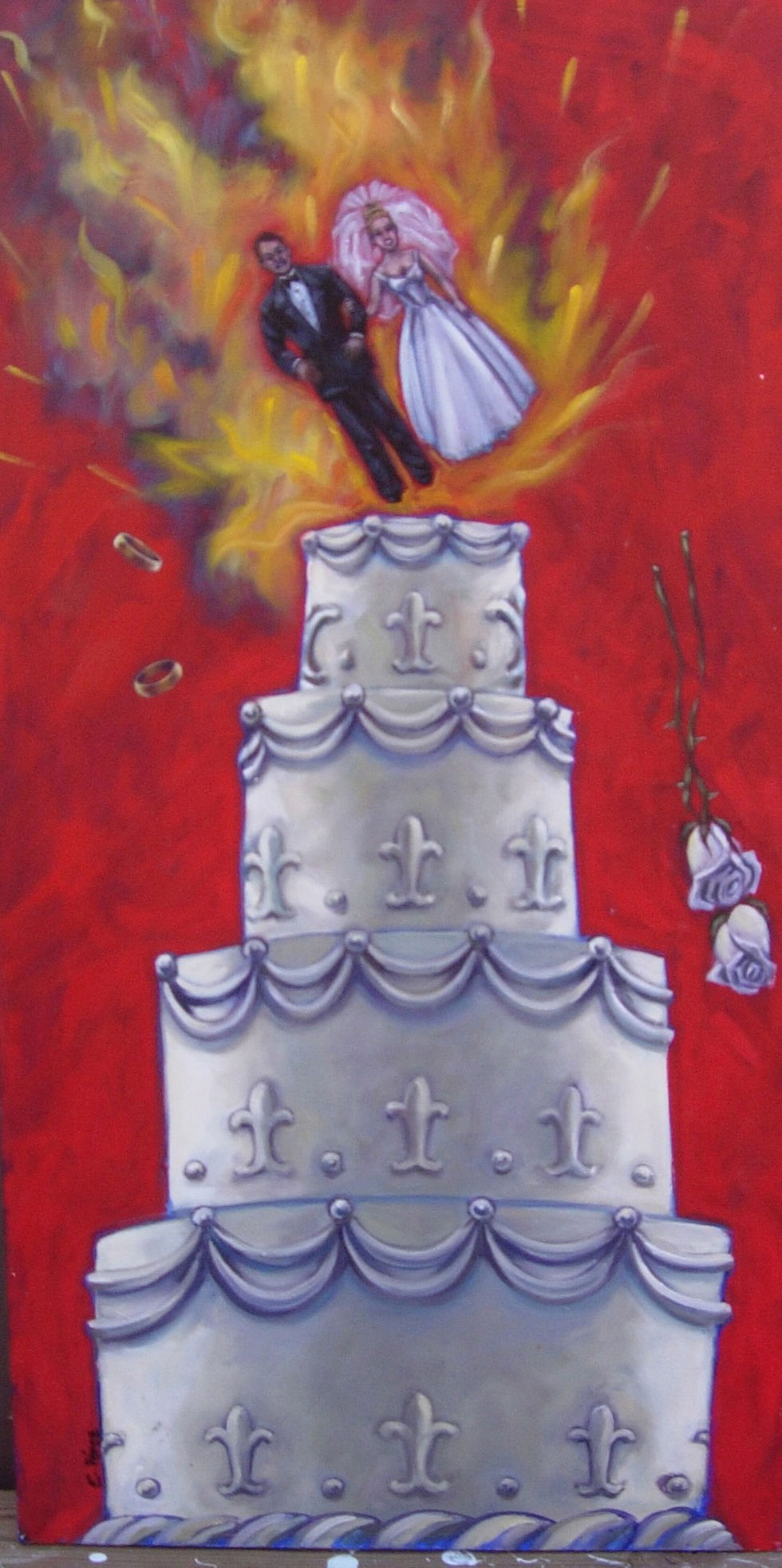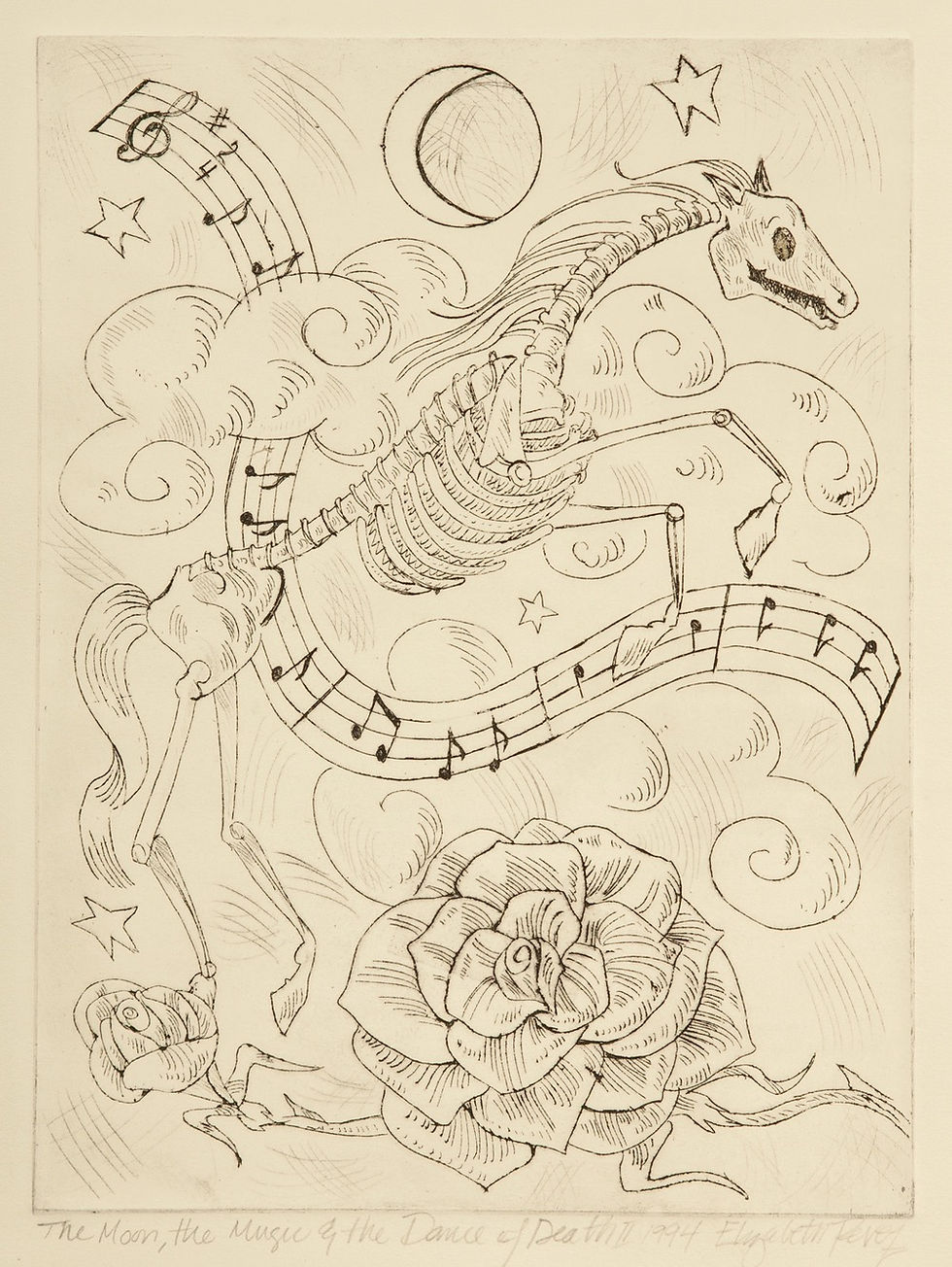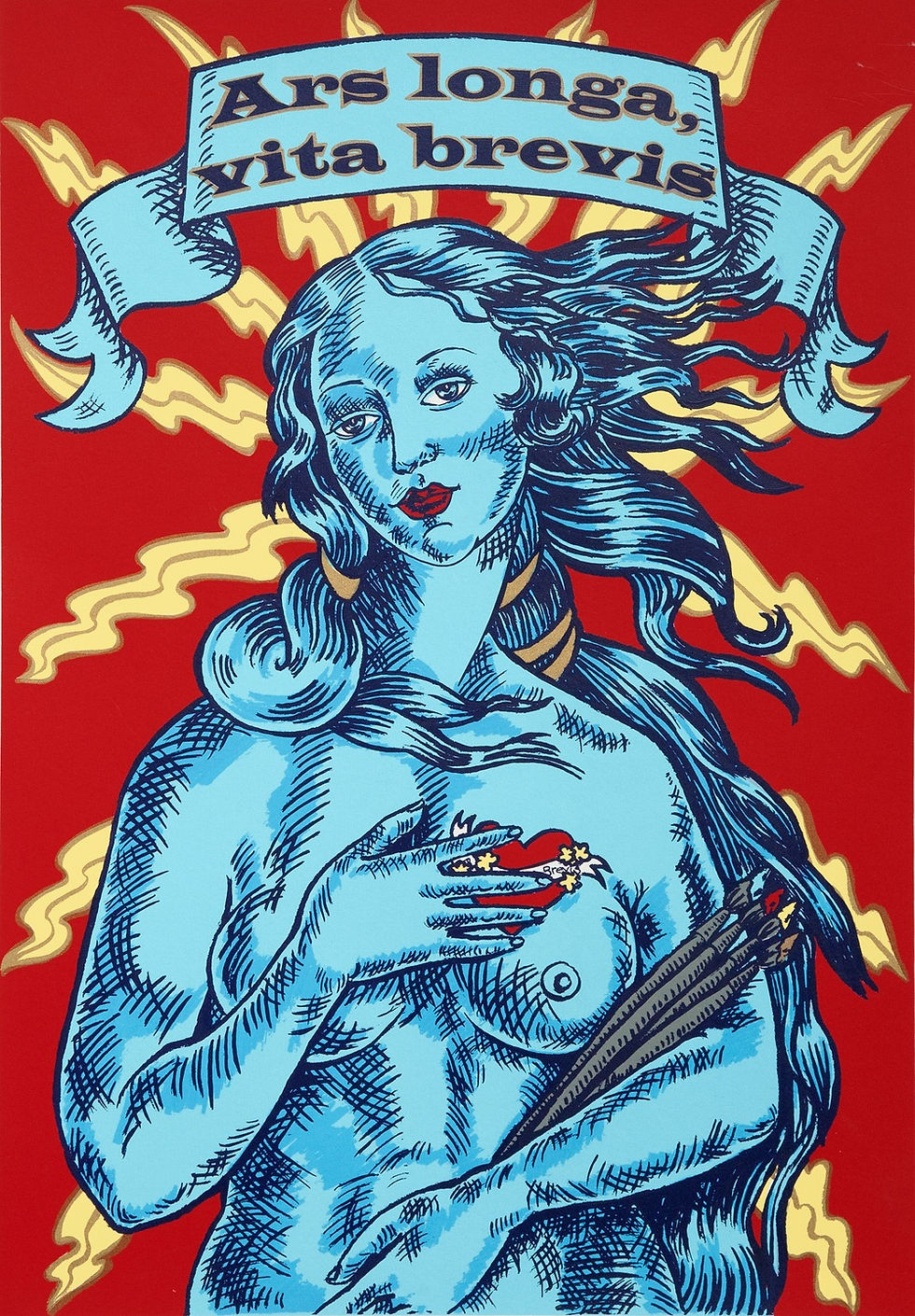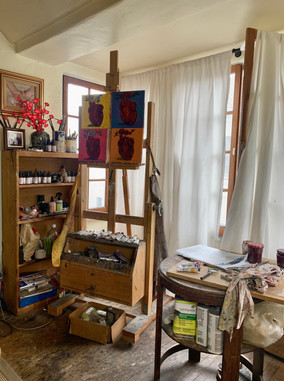Chicana Movement meets Buddhism in Elizabeth Perez Art Practice
- Ines Flack-Martinez
- Feb 12, 2021
- 7 min read
Updated: Nov 4

“Chicana” is defined by Merriam Webster as “an American woman or girl of Mexican descent.” For some, “Chicana/o” merely functions as a neutral label, while for others, the term has political connotations and expresses defiance of the status quo.
An important aspect of Chicano history is how an art style transformed into a cultural movement, particularly in the east side of LA. Large, vibrant murals appeared across LA’s art landscape, celebrating Chicano’s indigenous cultural roots and bringing awareness to social issues facing Mexican-American communities.
Murals and large installations were used as an educational tool to share the “invisible” narratives of this community.


Unfortunately, the same movement that aimed to unify and empower Chicanos largely excluded Chicana women, who are often overlooked and underappreciated in the art community.
Chicana women, however, are reclaiming and redefining the historically “male” art form and fighting for better representation.
Some of the most influential Chicana artists today include Judithe Hernández, a talented muralist and the only female member of the artist collective “Los Four,” Shizu Saldamando, a San Francisco native known for her visual biographies and collaged paintings depicting the Latino punk and queer club scenes of LA, and Linda Vallejo a painter and sculptor known for her mixed media works.
My surrogate aunt and good family friend, Elizabeth Perez, is a Chicana painter as well as a retired teacher and devoted animal lover. I hope this interview does justice to her originality and uniquely L.A. perspective.
Tell me about your upbringing. Are there any artists in your family?
My parents separated early in my life and my first memories were of living with my grandparents northeast of downtown in El Sereno, a predominantly Latino neighborhood. I played with cousins from the Perez family and made tortillas. I knew little else. I moved to Whittier around 1956 when my mother remarried.
My father liked playing music and my grandfather liked drawing. But no, not really. I just always personally gravitated towards visual art.
What does being Chicana mean to you?
This self-definition has changed over time. I think a lot of Latinos began to develop a pride in their culture in the 1960s that had previously been dormant. At this time Cesar Chavez was organizing farmworkers in the Central Valley and I think the whole country was becoming cognizant that we were a potent force and not to be ignored. Most Latinos were working class and had menial jobs, but after a time began to move socially upward. My grandfather stopped being a welder and became a realtor. My father eventually became a banker type as a vice-president at a big Home Savings and Loan company.
To me now, being Chicana means the link I have to my family and to the culture that encompasses two worlds. I find the accents that some Chicanos have evokes a certain affection from me.

Why did you choose painting?
I actually didn’t. I think I’ve always had a visual awareness of the world. I love looking at things! Even in the bad art reproductions we would see as children, I appreciated the rendering of form, composition, and coloration. I always liked making up stories about what was happening in paintings.
When doing my own little drawings and coloring I became aware that I could create my own world in my narration.
What is your favorite medium apart from painting?
Though it seems like a simple answer I have to say I love drawing! There is something about the simplicity and immediacy of line and form that is so compelling. Even in painting, I like a limited color palette, and so the fewer colors usually used in a drawing is very appealing. I had a teacher in art school who said he didn’t do paintings because there were too many choices, that it was like being in a cafeteria of color and he got tired of picking the exact one.
I also love printmaking, especially etching as well as monoprints and silkscreens because it is such a surprise what comes out.

How did living in Paris for some time influence your work?
I visited France for the first time the summer before I graduated from university and moved there in the late ’70s for a few years. I lived on the Left Bank and could easily cross the Pont Royal to get to the Louvre. I fell in love with France the way you are supposed to fall in love with a lover. Because I prefer to see only three or four paintings at a time to really look at them, I was frequently there especially during the colder months when fewer people came. Looking at great paintings is its own education. You can learn so much about composition, color, movement, anatomy, etc... You can even learn if great artists experienced the same problems you do. For example, the Musee d’Orsay has some of the greatest Impressionists and post-Impressionists.
Many artists there had cats whose cat hair would get onto their canvases and remain there 150 years later! I have had the same problems with my cat’s hair floating onto a wet canvas! This is a mundane problem but many artists have it!
The art scene in LA in the 1970s and 80s shifted dramatically, with the feminist art movement gaining traction and Chicano artists reclaiming public spaces.

How did living in the Los Feliz/Silverlake area at that time influence your work?
I think people used to take Mexicans as a more quiet, obliging culture. Around 1974 there was an exhibition at LA County Museum of Art by a group of artists called “Los Four”. This was previously unheard of: that artists from “provincial” and humble East LA would ever have a well-received show at such a prestigious art museum. I became friends with one of them, Carlos Almaraz, and began to use more Latin imagery and coloration in some of my art pieces.
He really inspired people about their worth as Latinos and about the importance of speaking up and claiming their rights. I think people became really aware of Chicano artists through murals and big paintings.

What is the biggest hurdle you’ve had to overcome as an artist?
Most artists I know have had this problem: During the time you are developing as an artist, you really have to trust yourself and your vision in art, or your voice. There are so many who will delight in telling you which direction to take but you have to know to ignore them and appreciate who you are.

How has practicing Buddhism played into your creative process?
Buddhism stresses that every living entity has its own intrinsic value. Most of my work has to do with portraying the human being. I’ve been told that there is a feeling of humanism pervading my work. I would say that I try to not limit that feeling of humanism to the subject matter but also in facial expression and to the general unspoken feeling that art can evoke.
Also, Buddhism is about never giving up. I contracted rheumatoid arthritis which was not properly diagnosed for years. As a result, I had tremendous difficulty with my hands. I went to a senior advisor in our Buddhist organization to ask for guidance as I was unable to do my artwork.
He just looked at me and said, “Well, Beethoven wrote the 9th Symphony after he had gone deaf.”
I chanted about it and made the determination I would make great artwork. Shortly afterward I was given a medication that made most of my symptoms much better and I am drawing and painting again!
Who are some of the artists that influence you most?
This changes over the years but I loved Eva Hesse and Agnes Martin though their work was so different than my own. These were artists who were on the cutting edge in the ’60s and ’70s. They were women and women artists who had begun to be taken more seriously. I liked reading what they said about art. I also love the great Irish artist Francis Bacon, Chiam Soutine, and definitely Edouard Manet if we are speaking about artists from the past. I am also fond of British painter Cecily Brown’s work because she offers a distinctly feminist approach to art. Amy Sherald, who did portraits of the Obamas, is also great. The list goes on and on but each one of these artists has a singular way of doing artwork that encourages one’s individual expression.

Are you working on anything now? How has the pandemic affected your work?

At the start of the pandemic and subsequent lockdown, I started another series of Cardio-bouquets. They are small (10x X 10x) paintings of a human heart with flowers protruding from the aorta. I like to make an assemblage of them, each a different color. They are slightly grisly but optimistic at the same time. I also just started what I think will be my last tattoo painting. I like using watercolor for my tattoo paintings because I think it sinks into paper the same way ink sinks into the skin-- they have similar transparencies and fade with time. I haven’t been particularly creative during this pandemic, however.
I miss going to art museums and just sitting quietly with paintings, or meeting up with fellow artists and having exchanges about art.

Further Reading & Books
by Dionne Espinoza (Editor), María Eugenia Cotera (Editor)
by Jennifer A. González (Editor), C. Ondine Chavoya
Films
Luz Maria Gordillo and Juan Javier Pescador 2013
Articles
Interviews
Woman's Building History: Linda Vallejo (Chicana Art & Downtown LA)
FALL Timelapse Printmaking by Sonia Romero (Chicana Artist and theme of The Fall)
Additional Photo Credits:
Nice Guy with Hair Net Watercolor with Acrylic Background 40" x 60"
"How Long Will You Mourn Me?" Watercolor with Acrylic Background 36" x 60"
Spider Woman Watercolor with Acrylic Background 24" x 40"
Raven and Skull Acrylic/canvas 18" x 18"
"Snake In the Grass" Oil/canvas 18" x 24"
The Red Brassiere Acrylic 48" x 48"
Midnight Concerto Acrylic 54" x 54"
Images of studio and Elizabeth smiling in the studio by Jan-Peter Flack
Mural "LA History: A Mexican Perspective" by Barbara Carrasco 1981 Photo: Sean Meredith Courtesy California Historical Society/La Plaza de Cultura y Artes 2017
Ines is a writer and contributor for withitgirl, a UCLA Bruin and enjoys surfing, biking, and making lemon bars.
© 2020-2021 withitgirl. All rights reserved. We appreciate your feedback!























Comments